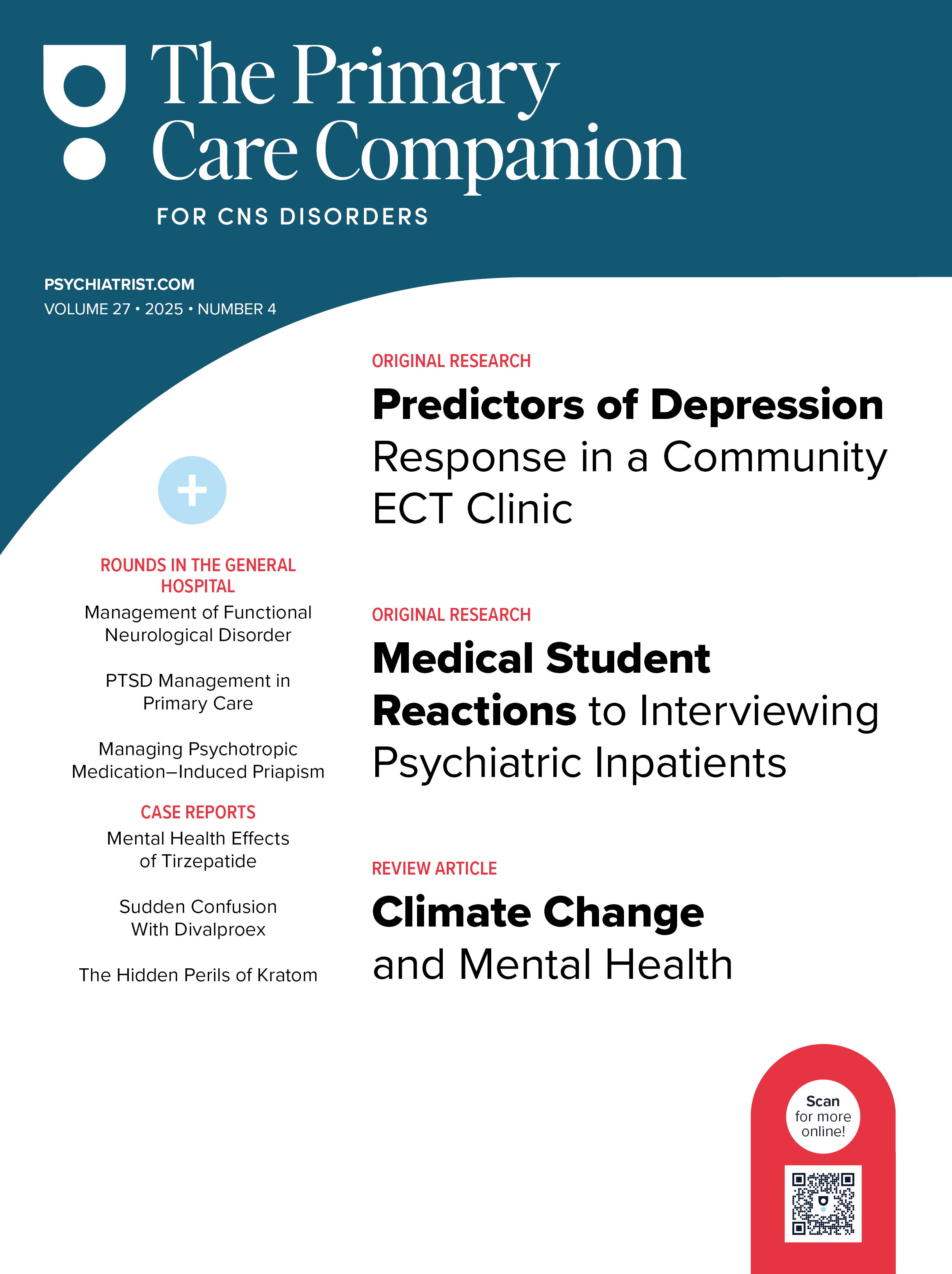Coping With Helplessness
Part of my assignment as a palliative care psychiatrist involves psychotherapy with severely ill inpatient veterans. One morning each week, my site of operations is a specialized inpatient unit called the community living center. Some of the patients on this unit receive hospice care, while others are designated "end of life." Although the expectation for the residents of this community is "life at its final stage," some improve sufficiently to actually achieve discharge. Others remain residents for far longer than the standard "6-month or less" stay.
The opportunity is therefore provided for both short-term and longer-term psychotherapy, with adjustment to a hospital existence the common goal. In nearly 4 years of work on this unit, I have come to know a number of men and women. I have approached each patient from the viewpoint of cognitive therapy.
A common issue I have encountered is the resident’s inability to continue to do what he or she did previously at a younger age. In some instances, this inability may form the basis for how the resident views his or her identity. Entry into this stage of life often mandates a change. The resident is also required to learn how to live in a space accommodating 20 people, rather than in an apartment for one or in a home for a family. Helplessness comes in a variety of forms, and, for some patients, it may recur over and over again.
I met Mr A almost 3 years ago. We worked together for a year in weekly psychotherapy sessions. In many ways, however, our most important work took place recently, nearly 3 years after we first met. But, that gets ahead of my story.
CASE PRESENTATION
Mr A was 60 years old when we met. He is a white veteran, with no children, born and raised in Philadelphia, Pennsylvania. His parents died when he was a young man, but he retained a close relationship with an older brother and sister. He graduated from high school and then served in the US Navy for 6 years. Upon discharge, a severe automobile accident followed. The accident left him with a fractured vertebra, and diagnoses of diabetes and hypertension were made soon thereafter. Mr A suffered multiple urinary tract infections. Finally, acute renal failure resulted in his placement in a nursing home.
Because of Mr A’s medical history, a career was not possible, and he had only a brief marital relationship. As a young man he played basketball and had a close relationship with his sister. His personality style was passive, nondemanding, and noncomplaining.
At the age of 60, Mr A’s care was transferred from the nursing home to our community living center at the Veterans Administration hospital in Charleston, South Carolina. He was treated with dialysis 3 times per week. His arm and leg strength were both impaired. The frequent urinary tract infections continued. On the unit, he stayed in bed, made no real relationships, and made few demands on staff. He was known for never smiling and for having little to say.
PSYCHOTHERAPY
Our work together began with education: the basics of the cognitive model and the rationale for dialysis. How one thinks about things determines how one feels and often what one does. When the kidneys cannot cleanse the system of impurities, dialysis performs this function. Mr A initially had trouble dealing with the enforced idleness of dialysis and learned to watch old movies on television to pass the time. Mr A became bored quickly being stuck in bed. However, as he was nondemanding, he asked no staff member for anything. With weakness in his arms and legs, he was often immobile and felt helpless.
We connected around his interest in professional sports. We spoke as well about current events, which he also followed avidly. I urged the staff to provide him with stimulation. I asked him lots of questions. We met 33 times during his first inpatient year. He came out of his shell. He began to ask the staff for things. We did some assertiveness training.
Finally, Mr A requested a power wheelchair so that he could leave his bed and his room. It took quite a while, but, one day, the wheelchair arrived. He began to go out on trips with other residents and staff. He began to take his meals with others in the common dining room. He became much more spontaneous. He had developed a host of resources to cope with his initial helplessness. He formed friendships with several other residents. He saw that he had made a great deal of progress. He applied cognitive thinking. He got stronger, more mobile, and his mood improved greatly. Independence became an important value for him. Our weekly sessions stopped after 1 year of working together. A follow-up visit 2 months later found Mr A continuing to progress. Our contacts were purely social thereafter. We had another formal session just prior to his second anniversary at the community living center. He continued to do well.
One day, 10 months later, while I was routinely scanning the nursing notes, I became aware of a problem that Mr A had experienced while on the dialysis unit. The person next to him screamed out and then had a cardiac arrest. Mr A became upset, felt helpless, could not move, and knew that there was nothing he could do to help. His reaction lasted for several days, with prominent crying spells and withdrawal. I met him in the dialysis unit to speak about the incident and his reaction to it.
Mr A told me about the incident in detail and carefully described his reaction to it. I told him that many of us had been in similar "helpless" situations. I had been there, too. Now, however, the incident was over, and it could be fairly said that he was keeping it alive in his mind. Was this a good strategy for him? Had he thought about himself at some point, rather than the man next to him? He responded that he had thought immediately about an upcoming minor surgical procedure that he was scheduled to have. "This could happen to me," he said. We spoke about whether the probability of a bad outcome for him had somehow changed because of this incident. "No, I guess it hasn’ t," he said. "And, by the way," he added, "the other patient is now back in his bed, cheerful, and doing well." I emphasized to Mr A the role that his feeling of helplessness had played in the generation of his emotional upset. I also noted the extraordinary degree of helplessness that he had experienced when he first arrived at the hospital and what he had accomplished in changing that mindset.
I saw Mr A again several days later. "I am back to being myself," he said. "I let my thoughts carry me away. Now, I know better than that." So, the end of life stage goes on in a man who has grown and changed enormously. And, I learned that, sometimes, when a relationship ends, it can be briefly reignited with beneficial results.


